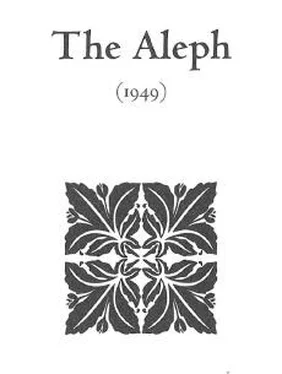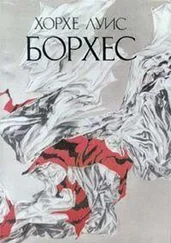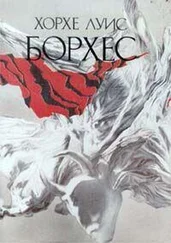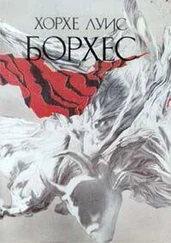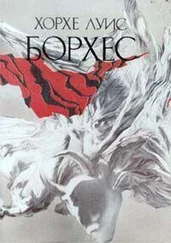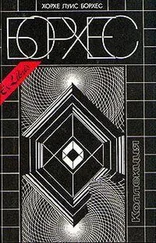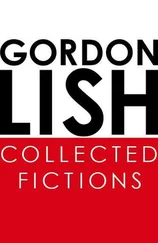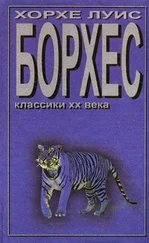Хорхе Борхес - Collected Fictions
Здесь есть возможность читать онлайн «Хорхе Борхес - Collected Fictions» весь текст электронной книги совершенно бесплатно (целиком полную версию без сокращений). В некоторых случаях можно слушать аудио, скачать через торрент в формате fb2 и присутствует краткое содержание. Год выпуска: 1999, ISBN: 1999, Издательство: Penguin (UK), Жанр: Старинная литература, на английском языке. Описание произведения, (предисловие) а так же отзывы посетителей доступны на портале библиотеки ЛибКат.
- Название:Collected Fictions
- Автор:
- Издательство:Penguin (UK)
- Жанр:
- Год:1999
- ISBN:9780140286809
- Рейтинг книги:5 / 5. Голосов: 1
-
Избранное:Добавить в избранное
- Отзывы:
-
Ваша оценка:
- 100
- 1
- 2
- 3
- 4
- 5
Collected Fictions: краткое содержание, описание и аннотация
Предлагаем к чтению аннотацию, описание, краткое содержание или предисловие (зависит от того, что написал сам автор книги «Collected Fictions»). Если вы не нашли необходимую информацию о книге — напишите в комментариях, мы постараемся отыскать её.
Collected Fictions — читать онлайн бесплатно полную книгу (весь текст) целиком
Ниже представлен текст книги, разбитый по страницам. Система сохранения места последней прочитанной страницы, позволяет с удобством читать онлайн бесплатно книгу «Collected Fictions», без необходимости каждый раз заново искать на чём Вы остановились. Поставьте закладку, и сможете в любой момент перейти на страницу, на которой закончили чтение.
Интервал:
Закладка:
Tlön, Uqbar, Orbis Tertius
* Ramos Mejia: "A part of Buenos Aires in which the rich had weekend houses containing an English colony. It is now an industrial suburb" (Hughes and Fishburn).
* Bioy Casares: Adolfo Bioy Casares (1914- ): Argentine novelist, JLB's closest friend and collaborator with JLB on numerous projects, including some signed with joint pseudonyms. In their joint productions, the two men were interested in detective stories, innovative narrative techniques (as the text here hints), and tales of a somewhat "fantastic" nature. Unfortunately rather eclipsed by Borges, especially in the English-speaking world, Bioy Casares is a major literary figure with a distinguished body of work; a description of the reciprocal influence of the two writers would require (at least) its own book-length study.
* Volume XLVI: The Obras completas, on which this translation is based, has "Volume XXVI," which the translator takes to be a typographical error, the second X slipped in for the correct L
* Johannes Valentinus Andrea in the writings of Thomas de Quincey: It is perhaps significant that de Quincey credits Andrea (1586-1654) with "inventing" the Rosicrucian order by writing satirical works (and one especially: Fama Fraternitatis of the meritorious Order of the Rosy Cross, addressed to the learned in general and the Governors of Europe) describing an absurd mystico-Christian secret society engaged not only in general beneficence and the improvement of mankind but also in alchemy and gold making. The public did not perceive Andrea's satirical intent, and many rushed to "join" this society, though they could never find anyone to admit them. At last, according to de Quincey, a group of "Paracelsists" decided that if nobody else would admit to being a Rosicrucian, they would take over the name and "be" the society.
* Carlos Mastronardi: Mastronardi (1901-1976) was "a poet, essayist, and journalist [in Buenos Aires], a member of the group of writers identified with the avant-garde literary magazine Martín Fierro" (Fishburn and Hughes). Balderston (The Literary Universe of JLB: An Index... [New York: Greenwood Press], 1986) gives some of his titles: Luz de Provincia, Tierra amanecida, Conocimiento de la noche. Mastronardi was one of JLB's closest friends throughout the thirties and forties (Borgestoo was closely associated with Martín Fierro), and Rodríguez Monegal reported in his biography of JLB that Borges was still seeing Mastronardi as the biography (pubi.1978) was written; it seems safe to say, therefore, that Borges and Mastronardi were friends until Mastronardi's death.
* Capangas: Overseers or foremen of gangs of workers, usually either slaves or indentured semislaves, in rural areas, for cutting timber, etc., though not on ranches, where the foreman is known as a capataz. This word is of Guaraníor perhaps African origin and came into Spanish, as JLB indicates, from the area of Brazil.
* Néstor Ibarra: (b. 1908) "Born in France of an Argentine father who was the son of a French Basque émigré, M went to the University of Buenos Aires around 1925 to complete his graduate education. While [there] he discovered Borges' poems and ... tried to persuade his teachers to let him write a thesis on Borges' ultraist poetry"(Rodríguez Monegal, p. 239). Ibarra's groundbreaking and very important study of JLB, Borges et Borges, and his translations of JLB (along with those of Roger Caillois) into French in the 19505 were instrumental in the worldwide recognition of JLB's greatness. Among the other telling associations with this and other stories is the fact that Ibarra and Borges invented a new language ("with surrealist or ultraist touches"), a new French school of literature, Identism, "in which objects were always compared to themselves," and a new review, tided Papers for the Suppression of Reality (see "Pierre Menard," in this volume; this information, Rodriguez Monegal, pp. 240-241). The N. R. F. is the Nouvelle Revue Française, an extremely important French literary magazine that published virtually every important modern writer in the first three decades of this century.
* Ezequiel Martínez Estrada: Martinez Estrada (1895-1964) was an influential Argentine writer whose work Radiografiade la pampa (X-ray of the Pampa) JLB reviewed very favorably in 1933 in the literary supplement (Revista Multicolor de los Sábados ["Saturday Motley Review"] ) to the Buenos Aires newspaper Crítica.
* Drieu La Rochelle: Pierre-Eugene Drieu La Rochelle (1893-1945) was for a time the editor of the Nouvelle Revue Française; he visited Argentina in 1933, recognized JLB's genius, and is reported to have said on his return to France that "Borges vaut levoyage" (Físhburn and Hughes).
* Alfonso Reyes: Reyes (1889-1959) was a Mexican poet and essayist, ambassador to Buenos Aires (1927-1930 and again 1936—1937), and friend of JLB's (Fishburn and Hughes). Reyes is recognized as one of the great humanists of the Americas in the twentieth century, an immensely cultured man who was a master of the Spanish language and its style ("direct and succinct without being thin or prosaic" [Rodriquez Monegal]).
* Xul Solar: Xul Solar is the nom de plume-turned-name of Alejandro Schultz (1887-1963), a lifelong friend of JLB, who compared him favorably with William Blake. Xul was a painter and something of a "creative linguist," having invented a language he called creol: a "language ... made up of Spanish enriched by neologisms and by monosyllabic English words ... used as adverbs" (Roberto Alifano, interviewer and editor, Twenty-Four Conversations with Borges, trans. Nicomedes Suárez Araúz, Willis Barnstone, and Noemi Escandell [Housatonic, Mass.: Lascaux Publishers, 1984], p. 119). In another place, JLB also notes another language invented by Xul Solar: "a philosophical language after the manner of John Wilkins" ("Autobiographical Essay," * The Aleph and Other Stories: 1933-1969 [New York: Dutton, 1970], pp. 203-260). JLB goes on to note that "Xul was his version of Schultz and Solar of Solari." Xul Solar's painting has often been compared with that of Paul Klee;"strange" and "mysterious" are adjectives often applied to it. Xul illustrated three of JLB's books: El tamaño de mi esperanza (1926), El idioma de los argentinos (1928), and Un modelo para la muerte, the collaboration between JLB and Adolfo Bioy Casares that was signed"B. SuárezLynch." In his biography of Borges, Emir Rodríguez Monegal devotes several pages to Xul's influence on JLB's writing; Borges himself also talks at length about Xul in the anthology of interviews noted above. Xul was, above all, a "character" in the Buenos Aires of the twenties and thirties and beyond.
* Amorim: Enrique Amorim (1900-1960) was a Uruguayan novelist, related to Borges by marriage. He wrote about the pampas and the gaucho (and gaucho life); Borges thought his El Paisano Aguilar "a closer description of gaucho life than Gùiraldes' more famous Don Segundo Sombra" (Fishburn and Hughes).
Pierre Menard, Author of the Quixote
* Local color in Maurice Barresor Rodríguez Larreta: Barres (1862-1923) was a "French writer whose works include a text on bullfighting entitled Du sang, de la volupté et de la mort" (Fishburn and Hughes); one can see what the narrator is getting at in terms of romanticizing the foreign. Enrique Rodriguez Larreta (1875-1961) wrote historical novels; one, set in Avila and Toledo in the time of Philip II (hence the reference to that name in the text) and titled La gloriade Don Ramiro, used an archaic Spanish for the dialogue; clearly this suggests the archaism of Menard's Quixote. (Here I paraphrase Fishburn and Hughes.)
Читать дальшеИнтервал:
Закладка:
Похожие книги на «Collected Fictions»
Представляем Вашему вниманию похожие книги на «Collected Fictions» списком для выбора. Мы отобрали схожую по названию и смыслу литературу в надежде предоставить читателям больше вариантов отыскать новые, интересные, ещё непрочитанные произведения.
Обсуждение, отзывы о книге «Collected Fictions» и просто собственные мнения читателей. Оставьте ваши комментарии, напишите, что Вы думаете о произведении, его смысле или главных героях. Укажите что конкретно понравилось, а что нет, и почему Вы так считаете.
